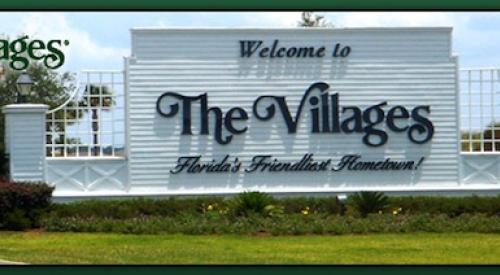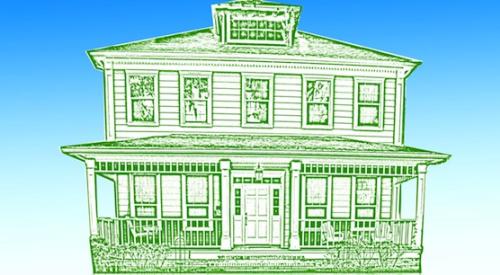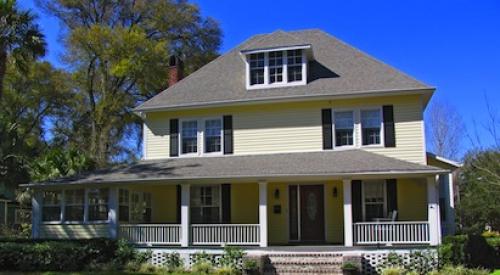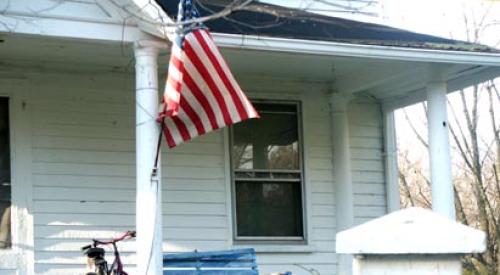The existing home market, with its 87 percent market share, is a better barometer to monitor home buying activity than the new home market. We expect that stabilization in sales volumes will be one of the first signs that individual markets are moving closer to recovery.
Sales VolumesFigure 1 on page 10 shows how fast home buying activity has decelerated in Phoenix; Riverside-San Bernardino, Calif.; Washington D.C.; Las Vegas; and Orlando, Fla. Activity appears to have hit a plateau in Houston and Dallas.
At its peak in September 2005, the annual existing home sales volume topped 7.2 million sales nationally. The latest data shows that sales nationally have now dropped below 6 million, which is a decline of 17 percent. We believe the correction in sales volumes in 2006 was more severe than what the most commonly reported data suggests, based on analysis we have conducted, and the correction is not yet over.
Home PricesHome prices adjust more quickly with new homes than resale homes, as there is more urgency among home builders to sell than there is among homeowners. However, there is no good local data for tracking real new-home prices. The data providers who collect this information miss incentives and other factors, and therefore the price appreciation rates in a tough market appear higher than they actually are. The best way to track new-home prices is to ask a sample of local executives what has happened in their communities over the last year.
Early to PeakIn markets like Orlando, Fla.; Riverside-San Bernardino (Southern California's Inland Empire); Phoenix; Las Vegas; and Washington, D.C., current annual resale volumes are approximately 40 percent less than at their peak levels during this cycle. Las Vegas peaked first in late 2004, while the other markets reached their highest sales volumes in mid- to late-2005. The resale volume in most of these markets has declined approximately 35 percent in just the last year alone, and the annual resale volumes are currently at the same level as mid-2002 in Orlando, Phoenix and Las Vegas. Each of these markets is showing only a slight year-over-year decline in resale prices, but further price decreases are expected.
Late to PeakThe resale markets in Dallas and Houston have held up well in the slowed national market and have just recently begun to show signs of slowing. The annual existing home sales volume peaked in January 2007 in Dallas and in February in Houston, making them among the last major housing markets in the country to witness declining sales. Volumes have declined less than 2 percent from earlier in the year.
What to WatchPay close attention to existing-home market conditions. Monitor resale activity and the volume of resale listings because they impact the health of your market. Existing-home sales volumes will begin to rise again soon in the markets where the corrections have been substantial and the economy remains strong.
I wouldn't pay much attention to published home prices these days. Instead, track the velocity of total sales in your price range in your submarket each month and do what you can to maximize your market's share of those home sales. HG
| EMPLOYMENT | AFFORDABILITY | PERMITS | ||||||||||
| Short-Term Outlook/Grade | 1-Year Payroll Employment Growth | 1-Year Growth Rate | Unemployment Rate | Median Resale Home Price | Resale Housing Costs as % of Income* | Housing Cycle Barometer** | 12-Month Single-Family Permits | 1-Year Single-Family Growth | 12-Month Total Permits | Total Permits as % of Peak Permits*** | ||
| 1 | Houston | 84,900 | 3.5% | 3.8% | 53,115 | 1% | 70,527 | 94% | $148,700 | 26% | 5.2 | |
| 2 | Atlanta | 42,800 | 1.8% | 4.0% | 47,378 | -23% | 61,721 | 82% | $170,110 | 24% | 3.7 | |
| 3 | Phoenix | 78,400 | 4.2% | 3.2% | 35,530 | -37% | 44,545 | 64% | $263,000 | 41% | 6.7 | |
| 4 | Riverside-San Bernardino | 44,600 | 3.5% | 5.0% | 27,018 | -41% | 30,935 | 54% | $390,000 | 65% | 9.3 | |
| 5 | Dallas | 70,500 | 3.5% | 3.9% | 24,662 | -23% | 33,720 | 46% | $167,800 | 28% | 5.2 | |
| 6 | Charlotte | 19,300 | 2.4% | 4.4% | 19,452 | -4% | 23,892 | 95% | $167,250 | 27% | 3.0 | |
| 7 | Chicago | 33,700 | 0.9% | 4.7% | 19,062 | -35% | 35,963 | 77% | $250,000 | 39% | 5.9 | |
| 8 | Orlando | 29,500 | 2.7% | 3.1% | 19,054 | -28% | 27,183 | 75% | $245,000 | 41% | 7.1 | |
| 9 | Las Vegas | 26,200 | 2.9% | 4.3% | 17,485 | -45% | 25,448 | 58% | $305,975 | 50% | 7.4 | |
| 10 | Austin | 31,700 | 4.4% | 3.2% | 15,284 | -20% | 22,043 | 83% | $181,900 | 33% | 5.3 | |
| 11 | Washington D.C. | 46,900 | 2.0% | 2.9% | 14,389 | -33% | 20,331 | 54% | $408,945 | 49% | 8.8 | |
| 12 | Nashville | 11,100 | 1.5% | 3.4% | 13,458 | -5% | 15,033 | 82% | $155,000 | 27% | 5.1 | |
| 13 | Fort Worth | 21,900 | 2.6% | 3.9% | 13,425 | -27% | 18,309 | 48% | $117,100 | 21% | 5.2 | |
| 14 | Raleigh-Cary | 12,300 | 2.5% | 3.4% | 13,144 | -8% | 16,909 | 96% | $189,000 | 29% | 3.7 | |
| 15 | Tampa | 19,600 | 1.5% | 3.3% | 13,109 | -51% | 17,596 | 46% | $190,000 | 35% | 6.2 | |
| 16 | San Antonio | 20,200 | 2.5% | 3.6% | 12,443 | -20% | 17,354 | 74% | $145,700 | 29% | 5.3 | |
| 17 | Denver | 22,300 | 1.9% | 3.5% | 10,807 | -38% | 16,158 | 57% | $237,950 | 38% | 5.7 | |
| 18 | Minneapolis | 23,200 | 1.3% | 4.2% | 10,367 | -37% | 14,051 | 50% | $234,000 | 33% | 6.2 | |
| 19 | Seattle | 45,200 | 3.2% | 3.6% | 10,204 | -18% | 20,793 | 75% | $415,000 | 59% | 10.0 | |
| 20 | Fort Myers | 6,800 | 2.9% | 3.3% | 10,016 | -53% | 12,546 | 43% | $255,000 | 43% | 6.5 | |
| Sources: Bureau of Labor Statistics; Census Bureau through the month ending April 2007; John Burns Real Estate Consulting. Data on all markets available at www.realestateconsulting.com **Proprietary affordability scale with 0 meaning most affordable time since 1983, 5 meaning median affordability, and 10 meaning least affordable time. *Annual Mortgage Costs +1/7th of the downpayment divided by income. *** Peak activity since 1985. |
||||||||||||
| Author Information |
| Chris Porter of John Burns Real Estate Consulting contributed to this report. John Burns helps many of the largest companies in the industry with strategy and monitoring market conditions. He can be reached at jburns@realestateconsulting.com. |












